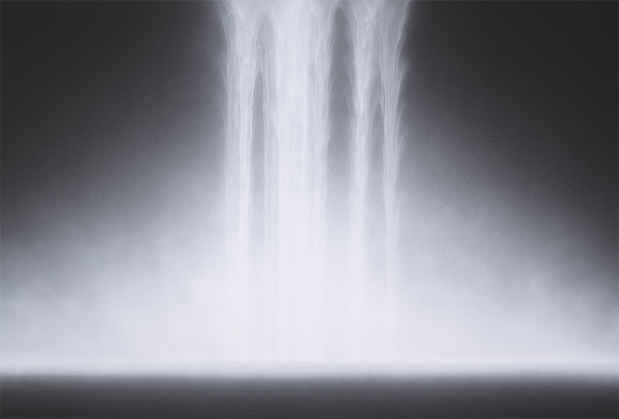“Surface Tension” Exhibition
Sundaram Tagore Gallery

This event has ended.
Sundaram Tagore New York presents Surface Tension, an exhibition showcasing the work of eight dynamic artists known for pushing the boundaries of traditional materials and exploring spatial environments in new and unexpected ways.
Japanese painter Hiroshi Senju expresses modernity with ancient painting techniques unique to Japan. The New York-based artist combines pigments derived from natural materials such as minerals, seashells and coral in a medium of animal-hide glue, and then applies this paint to Japanese mulberry paper using a minimalist language rooted in Abstract Expressionism.
The recently opened Hiroshi Senju Museum in Karuizawa, Japan, designed by Pritzker Prize winner Ryue Nishizawa, is home to more than one hundred works by the artist. Singapore’s OUB Centre at Raffles Place and the International Terminal at Tokyo’s Haneda Airport each prominently feature a monumental mural by Hiroshi Senju.
Born in Hawaii, painter Robert Yasuda moved to New York City in the late 1950s where he attended the Pratt Institute, Brooklyn. He began exploring themes of perception, light and nature in the early 1970s, producing resoundingly abstract, minimalist paintings.
Robert Yasuda has exhibited extensively across the globe. He has been recognized with awards from the National Endowment for the Arts and the American Academy of Arts and Letters. Yasuda’s works are in the permanent collections of The Brooklyn Museum; The Library of Congress, Washington, DC; The New York Public Library; The Bass Museum, Miami, Florida; Carnegie Institute, Pittsburg, Pennsylvania; and The McNay Art Museum, San Antonio, Texas.
Lee Waisler, a California-based American painter, creates dimensional portraits of historical and contemporary figures composed of strips of wood and blocks of color. He layers his canvases with thick pigments, followed by the addition of organic materials that hold symbolic value: sand for time, wood for life and glass for light. His range of materials creates dynamic forms and textures.
Waisler began painting in the 1960s. His earliest works were socially and politically charged, dealing with momentous historical events such as the Holocaust, the Vietnam War, and the civil rights movement. Waisler’s works soon began to reflect his growing interest in Eastern philosophy, and accordingly, became increasingly abstract. It was after a journey to India in the mid-nineties that he returned to figuration. He turned to portraiture full-force in 2005. His subjects include iconic individuals from many spheres, including Albert Einstein, Marilyn Monroe, Liu Xiaobo and Virginia Woolf.
Lee Waisler’s work is included in The Metropolitan Museum of Art, New York; the Victoria & Albert Museum, London; the Tel Aviv Museum of Art; the Brooklyn Museum; the Smithsonian Institution, Washington, DC; The Bibliothèque Nationale, Paris; the National Gallery of Modern Art, New Delhi; and the Indian Museum, Calcutta.
The complete list of artists in Surface Tension: Miya Ando, Nathan Slate Joseph, Hiroshi Senju, Robert Yasuda, Judith Murray, Lee Waisler, Phaptawan Suwanakudt, and Sohan Qadri.
Also on view, by special invitation, a selection of new works and drawings from the book Save the Himalayas by New York-raised Japanese artist Rima Fujita. The book, which includes forewords by The Dalai Lama and Richard Gere, educates children about ecological issues surrounding the Himalayas and the culture. All proceeds go toward educating children about the environment.
Working on black paper with oil pastels, Fujita draws inspiration from her dreams to create fantastical and lyrical imagery. Even when working on canvas, she begins with a black surface. She utilizes black not as negative space, but to denote contours and texture. She describes her creative process as meditative, and draws inspiration from the Japanese aesthetic of wabi-sabi, which recognizes beauty in imperfection and transience.
Special guests at the show opening will include Dr. Shamaila Khan, Director, Clinical Psychology at Boston Medical Center and Tendor Dorjee, Executive Director of Students for a Free Tibet, who will talk briefly about the environmental crisis in the Himalayas and the psychological effects impacting Tibetan exiles.
[Image: Hiroshi Senju “Waterfall” (2012) natural, acrylic pigments on Japanese mulberry paper, 51.3 x 76.3 in.]
Media
Schedule
from July 23, 2013 to August 24, 2013
Opening Reception on 2013-07-23 from 18:00 to 20:00